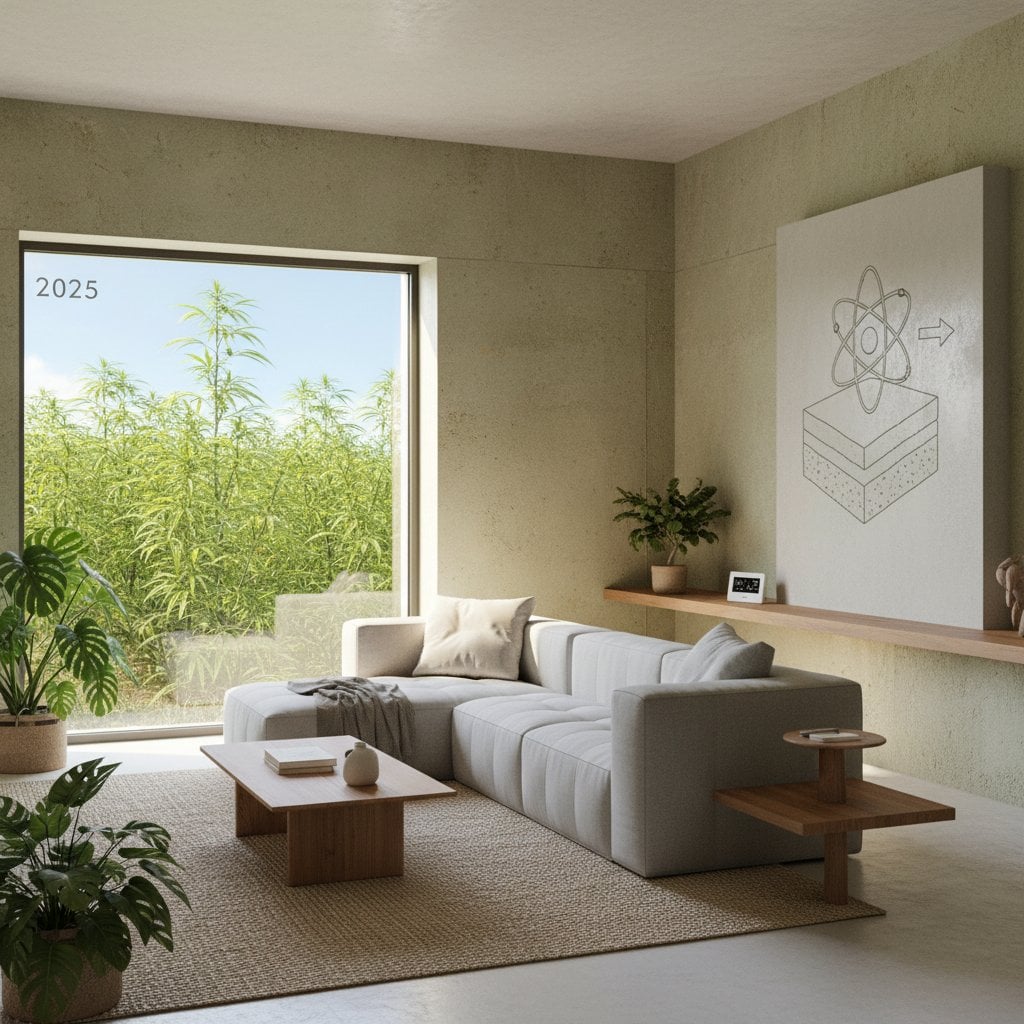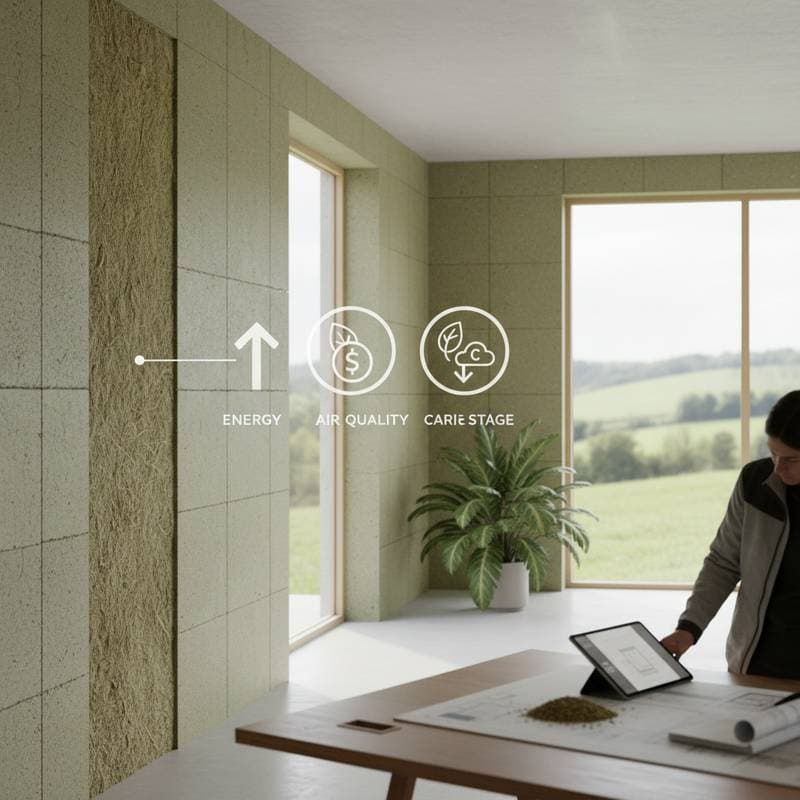Mushroom Insulation: A Sustainable Alternative with Fiberglass-Level Performance
Imagine stepping into a home on a frigid morning, feeling an enveloping warmth that keeps energy bills low and comfort high. Insulation choices can make or break a building project, whether you are retrofitting an older structure or designing a new build. Mushroom insulation, a bio-based material, offers R-values similar to fiberglass while slashing embodied carbon, making it a compelling option for sustainable construction. As a green building specialist, I will guide you through its benefits, practical applications, and key considerations to ensure success.
Understanding Mushroom Insulation and Its Importance
Mushroom insulation is crafted from mycelium, the root-like structure of fungi, which binds agricultural waste like straw or sawdust into rigid panels. The production process involves inoculating the waste with fungal strains, allowing controlled growth, and heat-curing the material to create a stable, lightweight product. These panels achieve R-values of 3.5 to 4.0 per inch, rivaling traditional fiberglass, while also regulating moisture and offering inherent fire resistance. This makes them a standout choice for builders prioritizing both performance and environmental impact.
The real advantage lies in the material's low embodied carbon, a critical factor as green building standards demand verifiable sustainability metrics. When selecting a product, focus on density, thickness, and moisture exposure compatibility to match your specific project needs. Third-party life cycle assessments are essential to back up environmental claims, especially for certifications like LEED or Passive House.
Market Trends and Policy Support
The mycelium materials market is on an upward trajectory, driven by scaling production and growing adoption in prefabricated construction. Policy incentives, such as European Union programs and United States funding for bio-based innovations, are speeding up integration into mainstream building practices. Green rating systems now reward projects for biogenic carbon sequestration, adding further appeal. Real-world applications, from retrofits to new office builds, demonstrate heating demand reductions of 20 to 30 percent when installed with precision and proper vapor control.
Practical Steps for Implementing Mushroom Insulation
1. Evaluate Project Fit
Start by assessing your climate and building design. Mycelium panels excel in moderate to cold regions, but in hot, humid areas, pair them with vapor-permeable barriers and balanced ventilation to manage indoor humidity. For wall cavities, aim for a minimum depth of 4 inches to achieve effective R-values; in shallower spaces, consider hybrid systems with thin spray foam or exterior insulation. Budget-wise, anticipate material costs of 12 to 18 dollars per square foot, balanced by potential HVAC savings of 10 to 15 percent over time.
2. Source Reliable Products
Opt for suppliers with third-party testing data, referencing ASTM thermal conductivity standards and fire classifications. Request LEED documentation and life cycle analysis summaries to support certification efforts. Established manufacturers offer standardized panels, while university labs or local mycelium farms can provide custom batches for pilot projects.
3. Follow Installation Best Practices
Ensure panels are fully cured with moisture content below 8 percent to prevent mold growth. Use breathable, bio-based sealants for joints to maintain airtightness while allowing moisture to escape. Verify fire ratings meet local codes, adding a gypsum layer if needed for compliance. In tight assemblies, integrate heat recovery ventilation to control humidity and preserve air quality.
4. Explore DIY and Small-Scale Pilots
For experienced builders with proper facilities, small-scale mycelium growth using starter kits and local waste is feasible, though matching professional quality control is challenging. DIY efforts are best suited for non-structural experiments or educational purposes. Community pilots should involve partnerships with experienced labs or builders familiar with bio-based materials.
Technical Insights and Hybrid Approaches
Insulation functions as a thermal barrier, where continuity and moisture management are as vital as R-value. Combining mycelium panels with materials like cellulose or thin rigid foam can boost overall performance while keeping carbon footprints low. Advances in AI-driven growth chambers allow manufacturers to customize panel density for specific climates, ensuring consistency and minimizing waste. These innovations help builders achieve predictable results across diverse projects.
Cost Analysis and Payback Potential
Consider a 500-square-foot installation at 15 dollars per square foot, totaling 7,500 dollars in material costs. If heating demand drops by 30 percent, annual utility savings could reach 1,200 dollars for a typical home. This yields a payback period of roughly 6.3 years, not accounting for incentives or reduced maintenance expenses. These figures highlight the long-term financial benefits of choosing sustainable insulation.
Challenges to Anticipate
Production capacity is expanding, but large-scale demand may strain supply chains, so plan for extended lead times. Regulatory hurdles persist in some areas where mycelium is considered experimental; early dialogue with code officials can prevent delays. Homeowner acceptance also hinges on education and transparent testing data to build trust in this innovative material.
Moving Forward with Mushroom Insulation
Whether you are overseeing a retrofit or planning a new build, request thermal conductivity and fire safety reports from suppliers to streamline certification processes. Homeowners should consult a green building professional to model energy savings specific to their climate, comparing mycelium to conventional options. Start with a small pilot application, such as an attic or single wall, to evaluate performance before full adoption. This approach balances innovation with practicality, paving the way for sustainable, comfortable spaces.








